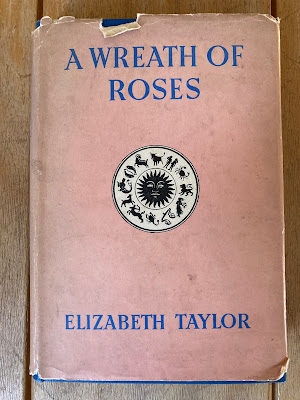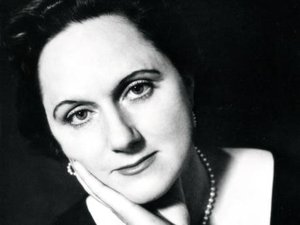Roses, Relationships and Portrait Painting by Griselda Heppel
My mother died 3 weeks ago. At nearly 98, this could hardly come as a surprise but it did. Stouthearted, resilient, refusing to be beaten by her increasing physical limitations, she seemed indomitable.
Then, barely two months into her move into a residential home, she had a stroke. Over the next few days the carers looked after her beautifully until she gently faded away. I couldn’t have wished for a more peaceful death for her, though I did feel sad that it happened just as she was starting to enjoy herself. The best moment to go, perhaps.
Camilla is on her way to stay with her childhood friend, Liz, at the cottage belonging to Frances, once Liz’s governess but now a full-time painter. Arriving at the railway station, she witnesses a shocking event which has nothing to do with the story, except to link her up with the only other witness, Richard, a cold, sinister man. Once installed together at the cottage, the three women are meant to be bound to each other by long-rooted affection but there’s precious little sign of this. Each – and in fact every character in the book, even the dog – seems to be locked in her own world of isolation and unhappiness. There’s no warmth between them, despite what they say. Human relationships, muses Camilla, ‘are the only thing to make life worth living.’ Yet any warmth in her relationships with Liz and Frances seems to have fizzled out.
And then I twigged. That is the point. Written soon after the Second World War, the book depicts a society of unhappy, rootless people, too damaged to connect with each other. They appear out of nowhere, with no backstory. Liz had a governess but there’s no mention of a family, either hers or Camilla’s. Richard, an SOE veteran, is researching a book he will never write. In structuring the story, Taylor appears to break a crucial novel-writing rule, that of the narrative voice. As a writer, you are expected either to be the omniscient narrator (telling the story from outside all the characters) or stick in the head of your main character. Jump around the heads of different people in the story and you risk losing all narrative drive and cohesion. Yet this is exactly what Taylor does, giving snippets of views from every character so far, even the dog, for heaven’s sake. Honestly, if I’d done this in a creative writing workshop I’d have been put right before you could say rookie error.
But then I’m not Elizabeth Taylor. (No, nor that one either.) In her masterful hands, the constant shift of perspective brings the loneliness of each character and their total inability to connect with each other into even sharper relief.
The result is a beautifully written but bleak book which I have to admit I’ve been struggling to get through, wondering all the time what about it appealed to my mother, for whom making connections with others was everything... until half way through, Frances gets her turn to drive the story, and painting becomes a strong theme.
Aha, now I understand.
As a painter herself, my mother would have been drawn to Frances’s point of view, and the part her absolute passion for painting plays in the novel.
I bet she didn't finish A Wreath of Roses.
 |
| A Wreath of Roses by Elizabeth Taylor |
I’d already begun to clear out her flat, and chanced upon a book in her shelves that intrigued me. My mother had never been a great reader, unless of theology or gardening; so how did a novel I’d never heard of, by a writer I admire, Elizabeth Taylor (no, not that Elizabeth Taylor), end up in her collection? Of course I had to read it, and for the first 100 pages or so of A Wreath of Roses I was none the wiser, grappling with as unappealing a set of characters as you could hope (not) to meet.
 |
| Elizabeth Taylor. Wikimedia |
 |
| Still Life by Ruth Heppel |
 |
| Gita by Ruth Heppel |
The result is a beautifully written but bleak book which I have to admit I’ve been struggling to get through, wondering all the time what about it appealed to my mother, for whom making connections with others was everything... until half way through, Frances gets her turn to drive the story, and painting becomes a strong theme.
Aha, now I understand.
 |
| Queen Camilla by Ruth Heppel |
Yet her sympathy would have been so much with Camilla’s statement about relationships, that I can’t imagine her enjoying this book, even with the painterly element.
As a portrait painter, and from her own lively personality, my mother was fascinated by human relationships, and what made people tick.
Her aim was to achieve ‘not only a physical likeness but… a portrayal of the sitter’s deeper human qualities and appealing personality traits.’
Her aim was to achieve ‘not only a physical likeness but… a portrayal of the sitter’s deeper human qualities and appealing personality traits.’
I bet she didn't finish A Wreath of Roses.
But I’ll never know.
OUT NOW
The Fall of a Sparrow by Griselda Heppel
WINNER of a Wishing Shelf Award
by the author of Ante's Inferno
WINNER of the People's Book Prize
Comments
At this sad time for you it is marvellous that you have been able to put together the blog. Often the carrying on of routines can help us at these difficult times. With all my good wishes, Peter
I'm delighted you taught Elizabeth Taylor to your students, as she is still so undeservedly unknown (I do wonder if that's down to the Other One being so famous). I thought Angel was terrific and I loved her style - elegant, precise, hilarious. A few years ago BBC Radio 4 dramatised Mrs Palfrey at the Clairmont and I loved that too. Taylor sheds a light on a whole era and section of society completely forgotten now, with real poignancy. Hmm, perhaps another blog post is in order.
And your mother's paintings! -- She was a wonderful artist.
Also, I never knew there was a writer called Elizabeth Taylor. I think I shall seek her books out...